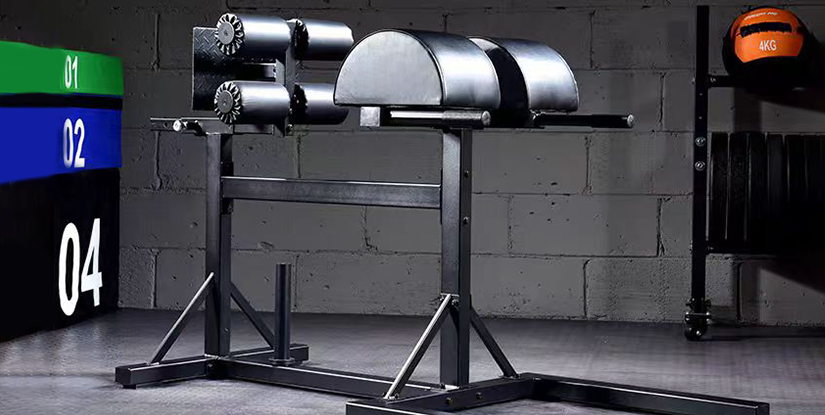Straight Arm Rope Lat Pulldown: Technique, Benefits & Variations

Introduction
The straight arm rope lat pulldown is a targeted upper‑body exercise designed to isolate the latissimus dorsi while minimizing biceps contribution. Performed on a cable machine with a rope attachment and a straight‑arm position, this movement emphasizes scapular depression and lat extension through a controlled arc. It is a useful addition to strength, hypertrophy, and rehabilitation programs when executed with proper technique.
Primary Muscles Targeted
- Latissimus dorsi — primary mover for shoulder extension and adduction
- Teres major — synergist supporting humeral extension
- Posterior deltoid — assists in shoulder extension and horizontal abduction
- Rhomboids and lower trapezius — scapular retraction and depression stabilization
- Core musculature — anti‑flexion and posture maintenance
Benefits
- Enhanced lat activation with reduced elbow flexor involvement
- Improved scapular control and posterior chain balance
- Versatile for both strength and hypertrophy phases due to cable constant tension
- Low‑impact alternative for athletes or clients with limited shoulder flexion
Equipment and Setup
Use a high‑pulley cable station and a rope attachment. Set the pulley to a high position so the rope runs above shoulder level. Stand with feet hip‑width apart, hinge slightly at the hips, and maintain a neutral spine. Grasp the rope with a neutral grip and extend your arms fully in front of you, ensuring shoulders are down and away from the ears.
Step‑by‑Step Technique
- Begin with light to moderate load to prioritize form.
- Stand tall with core braced and knees slightly bent to stabilize the torso.
- Keep arms straight (a small microbend at the elbow is acceptable to reduce joint stress).
- Initiate the movement by pulling the rope down and back using the lats — think of driving the upper arms toward the hips while maintaining straight arms.
- Retract and depress the scapula at the bottom of the movement, squeezing the shoulder blades together for 1–2 seconds.
- Slowly allow the rope to return to the start position under control, maintaining tension through the lats.
Common Mistakes
- Bending the elbows excessively, which shifts work to the biceps.
- Using momentum or leaning back to move heavier weights instead of isolating the lats.
- Allowing the shoulders to shrug; this reduces lat engagement and increases risk of impingement.
- Rushing the eccentric phase; control on the return is essential for tension and hypertrophy.
Programming Recommendations
Reps and sets depend on goals. For hypertrophy, 3–4 sets of 8–15 reps with 60–90 seconds rest is effective. For strength or scapular control, 3–5 sets of 5–8 reps with heavier load and longer rests are appropriate. Include the exercise 1–3 times per week, and pair it with compound pulling movements (e.g., rows) to ensure balanced development.
Variations and Progressions
- Single‑arm straight arm rope pulldown — addresses unilateral imbalances and core stability.
- Incline/bench supported variation — reduces lower back involvement for clients with stability limitations.
- Band straight arm pulldown — portable alternative that replicates cable line of pull.
- Tempo manipulation — slow eccentrics (3–4 s) increase time under tension for hypertrophy.
Warm‑Up and Mobility Considerations
Before heavy sets, perform scapular depressions, band pull‑aparts, and dynamic shoulder circles to prime the posterior chain. Ensure thoracic mobility is sufficient to allow a stable torso; limited thoracic extension can impede proper lat engagement.
Safety and Contraindications
Avoid heavy loads if you have acute shoulder pain or impingement symptoms. Maintain a neutral cervical spine and avoid craning the neck forward. If discomfort occurs in the anterior shoulder, reduce range of motion, decrease load, or substitute with a different lat‑focused exercise.
Conclusion
The straight arm rope lat pulldown is an effective, low‑risk exercise to isolate the lats and reinforce scapular control. When integrated thoughtfully into a program with attention to technique, it enhances upper‑body strength, posture, and pulling performance.
FAQs
- Q: Is it safe for beginners? A: Yes, with light load and focus on technique.
- Q: Does it build width or thickness? A: Primarily increases width by targeting the lats.
- Q: Should elbows be locked? A: No, maintain a slight microbend to protect joints.
- Q: How often can I do it? A: 1–3 times weekly depending on recovery and volume.
- Q: Rope vs straight bar — which is better? A: Rope allows greater scapular depression and a fuller contraction.
- Q: Can it replace pull‑ups? A: It complements but does not fully replace compound vertical pulls.
- Q: Recommended rep range? A: 8–15 for hypertrophy; 5–8 for strength emphasis.
- Q: Common pain signals? A: Sharp anterior shoulder or neck pain — stop and reassess.
- Q: Progression tip? A: Increase time under tension before adding significant load.

